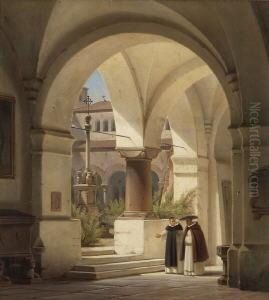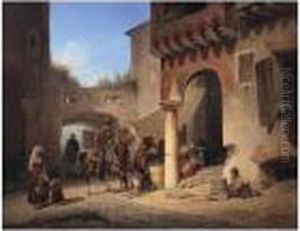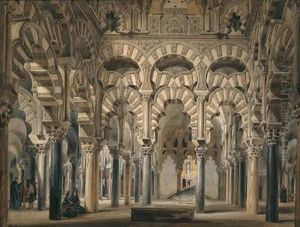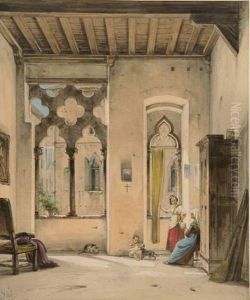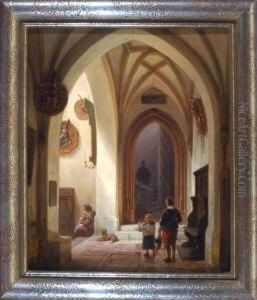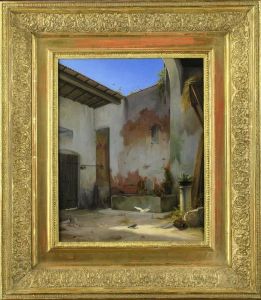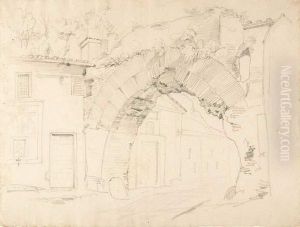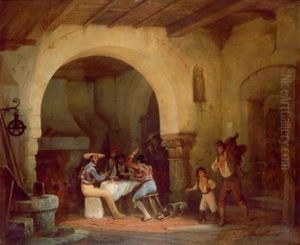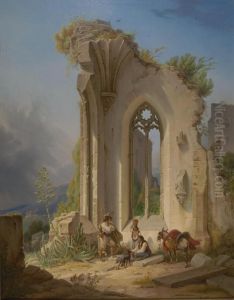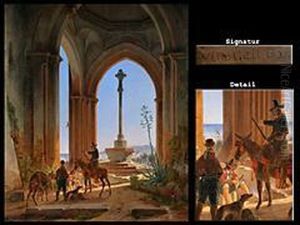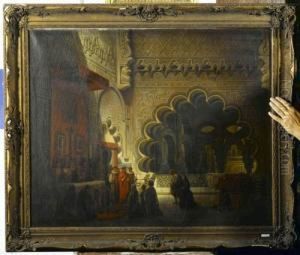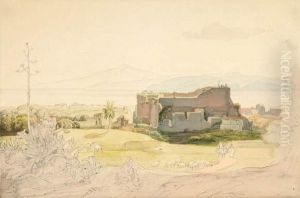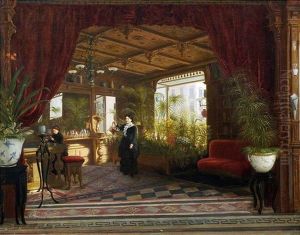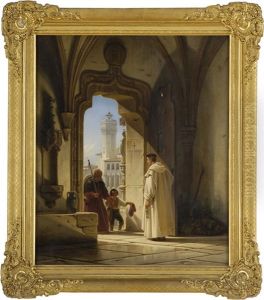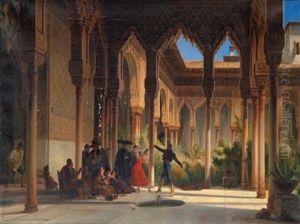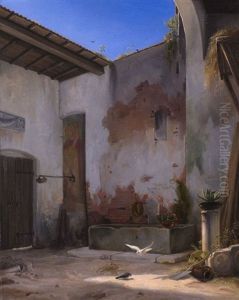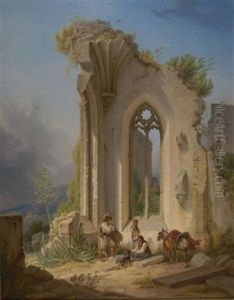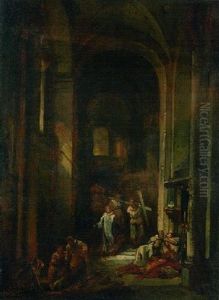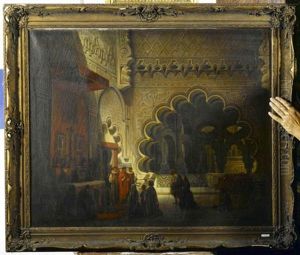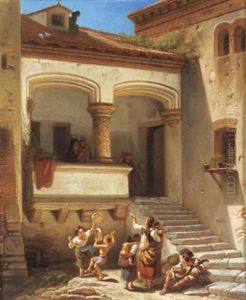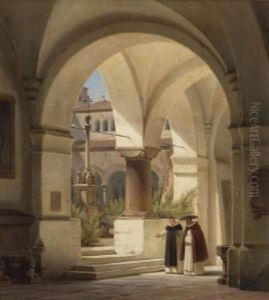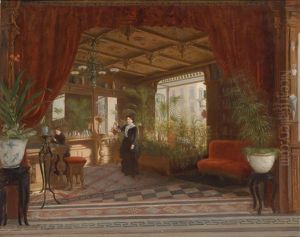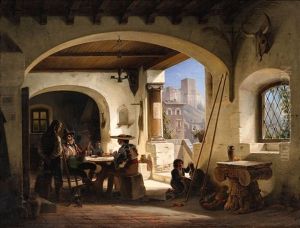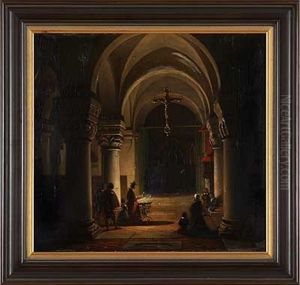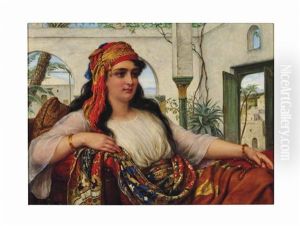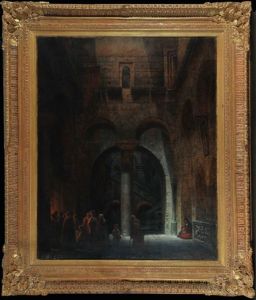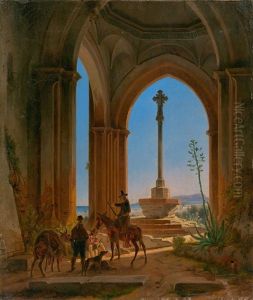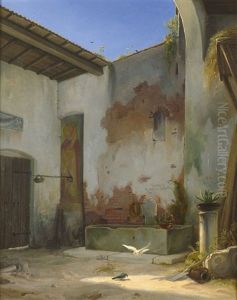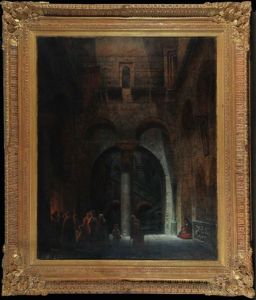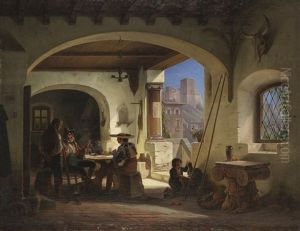Wilhelm Gail Paintings
Wilhelm Gail was a notable German painter, architect, and art historian born in 1804 in Munich, Germany. He was part of a family deeply involved in the arts; his father, Johann Christian Gail, was also an artist. Wilhelm Gail's contributions spanned across various domains of art, but he is particularly remembered for his works in architecture and historical painting. His education was comprehensive, studying under prominent figures and at esteemed institutions of the time, which allowed him to develop a versatile and refined artistic skill set.
Gail's early career was marked by his architectural works, where he showed a keen interest in the historical and classical styles. He was significantly influenced by the neoclassical movement, which was prevalent during his time. This influence is evident in his architectural designs, which often incorporated elements from ancient Greek and Roman architecture. However, Gail's talents were not confined to architecture alone. He was equally passionate about painting, especially historical scenes, which he executed with meticulous detail and a profound sense of historicity.
Throughout his career, Wilhelm Gail was involved in various significant projects and commissions that showcased his dual talents. He took part in the decoration of notable buildings and was also engaged in designing sets for theaters, demonstrating his versatility and creativity. His historical paintings, characterized by their vivid portrayal of historical events and figures, gained him considerable acclaim. These works not only highlight his technical skill but also his ability to capture the essence of historical narratives, bringing them to life with an almost photographic precision.
Gail's contributions to the field of art history were also significant. He was among the early art historians who emphasized the importance of rigorous study and documentation of art and architecture. His works in this domain provided valuable insights into the art historical practices of his time, contributing to the academic discourse on art and its history.
Wilhelm Gail's legacy is that of a multifaceted artist who excelled in painting, architecture, and art history. His works and scholarly contributions have had a lasting impact on the fields of art and architecture in Germany and beyond. Despite the passage of time, his works continue to be admired for their beauty, historical accuracy, and technical excellence. Gail passed away in 1890, leaving behind a rich body of work that continues to inspire and educate future generations of artists and historians.
